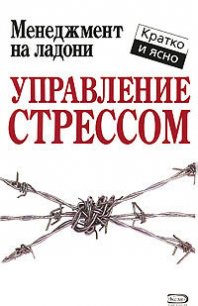Умная толпа - Рейнгольд Говард (книги хорошем качестве бесплатно без регистрации .txt) 📗
41. T. G. Zimmerman, «Personal Area Networks: Near-Field In-trabody Communication», IBM Systems Journal 35, 3 amp;4 (1996), « http:// www.research.ibm.com/journal/sj/mit/sectione/zimmerman.html » (6 March 2002).
42. Kortuem et al., «When Peer-to-Peer Comes».
43. Paul Rankin, «Context-Aware Mobile Phones: The Difference Between Pull and Push, Restoring the Importance of Place», Philips Research Laboratories, Redhill, Surrey, U. K.
44. Jay Schneider et al., «Auranet: Trust and Face-to-Face Interactions in a Wearable Community», Technical Report WCL-TR15, July 2001, « http://www.cs.uoregon.edu/research/wearables/Papers/ auranet.pdf » (6 March 2002).
45. Erving Goffman, The Presentation of Self in Everyday Life (Garden City, N. Y: Doubleday, 1959).
46. Jay Schneider et al., «Disseminating Trust Information in Wearable Communities», 2-nd Internacional Symposium on Handheld and Ubiquitous Computing (HUC2K), 25-27 September 2000, Bristol, England, « http://www.es. uoregon.edu/research/wearables/Papers/HUC2K.pdf » (6 March 2002).
47. Gerd Kortuem et al, «When Cyborgs Meet: Building Communities of Cooperating Wearable Agents», Proceedings Third International Symposium on Wearable Computers, 18-19 October 1999, San Francisco, California,« http://www.computer.org/proceedings/iswc/0428/04280124abs. htm » (6 March 2002).
48. Natalie S. Glance and Bernardo A. Huberman, «The Dynamics of Social Dilemmas», Scientific American, March 1994, 76-81.
49. Mark Granovetter, «Threshold Models of Collective Behavior», American Journal of Sociology 83, 6 (1978): 1420-1443.
50. Michael Suk-Young Chwe, Rational Ritual. Culture, Coordination, and Common Knowledge (Princeton: Princeton University Press, 2001), « http://www.chwe.net/michael/r.pdf » (6 March 2002).
51. Kevin Kelly, Out of Control (Reading, Mass.: Addison-Wesley, 1994), « http://www.kk.org/outofcontrol/index.html » (6 March 2002).
52. William Benzon, Beethoven's Anvil. Music in Mind and Culture (New York: Basic Books, 2001).
53. William Morton Wheeler, Emergent Evolution and the Development of Societies (New York: WW. Norton, 1928).
54. Steven Johnson, Emergence: The Connected Lives of Ants, Brains, Cities, and Software (New York: Scribner, 2001).
55. Bernardo A. Huberman, «The Social Mind», in Origins of the Human Brain, ed. Jean-Pierre Changeux and Jean Chavaillon (Oxford: Clarendon Press, 1995), 250.
56. Kay-Yut Chen, Leslie R. Fine, and Bernardo Huberman, «Forecasting Uncertain Events with Small Groups», HP Laboratories, Palo Alto, California, 3 August 2001, « http://papers.ssrn.com/sol3/papers.cfm? abstract_id=278601 » (6 March 2002).
57. Norman Johnson et al., «Symbiotic Intelligence: Self-Organizing Knowledge on Distributed Networks, Driven by Human Interaction», в отчете Artificial Life VI: Proceedings of the Sixth International Conference on Artificial Life (Complex Adaptive Systems, No. 6), ed. С Adami, R. Belew, H. Kitano, and C. Taylor (Cambridge: Bradford Books/MIT Press, 1998).
58. George Dyson, Darwin Among the Machines: The Evolution of Global Intelligence (Reading, Mass.: Addison-Wesley, 1997).
59. Johnson et al, «Symbiotic Intelligence».
Глава 8
1. Epigraph: Langdon Winner, «Whatever Happened to the Electronic Cottage?» Tech Knowledge Review 3.23, 27 July 2001. « http:// www.oreilly.com/people/staff/stevet/netfuture/2001/Jul2701_121. html#3 », 17 March 2002.
2. Epigraph: Robert Wright, Nonzero: The Logic of Human Destiny (New York: Vintage, 2000).
3. Rich Ling and Per Helmersen, «It Must Be Necessary, It Has to Cover a Need: The Adoption of Mobile Telephony Among Pre-Adolescents and Adolescents», in The Social Consequences of Mobile Telephony: The Proceedings from a Seminar About Society, Mobile Telephony, and Children, Telenor R amp;D N 38/2000, ed. Rich Ling and Kristin Trane, 26 June 2000, 19-23, « http://www.telenor.no/fou/prosjekter/Fremtidens_Brukere/ seminarer/mobilpresentasjoner/Proceedmgs%20_FoU%20notat_.pdf » (4 February 2002).
4. Nicola Green, «Outwardly Mobile: Young People and Mobile Technologies», in Perpetual Contact: Mobile Communication, Private Talk, and Public Performance, ed. by Mark Aakhus and James Katz (Cambridge: Cambridge University Press, 2002).
5. Howard Rheingold, «Look Who's Talking», Wired 7.01, January 1999, « http://www.wired.eom/wired/archive/7.01/amish.html » (18 March 2002).
6. Jane Wakefield, «Watching Your Every Move», BBC News Online, 7 February 2002, « http://news.bbc.co.uk/hi/english/sci/tech/newsid_ 1789000/1789157. stm » (16 March 2002).
7. Stuart Millar and Paul Kelso, «Liberties Fear Over Mobile Phone Details», The Guardian, 27 October 2001, « http://politics.guardian.co.uk/ attacks/story/0,1320,581861,00.html » (18 March 2002).
8. Declan McCullagh, «Call It Super Bowl Face Scan 1», Wired News, 2 February 2001, « http://www.wired.com/news/politics/0,1283,41571,00.html » (18 March 2002).
9. Ryan Naraine, «Face Recognition, Via Cell-Phones», Symobile, 27 March 2002, « http://www.symobile.com/comtex/content.cfm?transmit_id=2002086a9917 » (29 March 2002).
10. George Orwell, Nineteen Eighty-Four (London: Martin Seeker and Warburg, 1949).
11. David Lyon, The Electronic Eye: The Rise of Surveillance Society (Minneapolis: University of Minnesota Press, 1994).
12. Steve Mann, «Smart Clothing: The Wearable Computer and Wear-Cam», Personal Technologies 1, 1 (March 1997), « http://wearcam.org/ personaltechnologies/ » (18 March 2002).
13. Steven K. Feiner, «The Importance of Being Mobile: Some Social Consequences of Wearable Augmented Reality Systems», Proceedings of IWAR 99 (International Workshop on Augmented Reality), San Francisco, California, 20-21 October, 1999, 145-148, « http:// www.cs.columbia.edu/graphics/publications/FEINERiwar99.pdf » (18 March 2002).
14. Graeme Wearden, «Can 3G Phones Capture Criminals?» ZDNet News, 22 March 2002, « http://zdnet.com.com/2100-1105-867005.html » (27 March 2002).
15. Gary T. Marx, «The Surveillance Society: The Threat of 1984-Style Techniques», The Futurist, June 1985, 21-26.
16. Gary T Marx, Undercover: Police Surveillance in America (Berkeley: University of California Press, 1988).
17. Michel Foucault, Power/Knowledge: Selected Interviews and Other Writings, 1972-1977, ed. Colin Gordon (New York: Pantheon, 1980), 39.
18. Michel Foucault, Discipline and Punish. The Birth of the Prison (London: Tavistock, 1977), 27.
19. Michel Foucault, «Panopticism», in Discipline and Punish: The Birth of the Prison, trans. Alan Sheridan (New York: Vintage Books, 1995), 195-228.
20. Winner, «Whatever Happened to the Electronic Cottage?»
21. Jan English-Leuck et al, The Silicon Valley Cultures Project, « http://www.sjsu.edu/depts/anthropology/svcp/ » (23 March 2002), quoted in Winner.
22. Byron Reeves and Clifford Nass, The Media Equation: How People Treat Computers, Television, and New Media Like Real People and Places (Cambridge, U. K.: Cambridge University Press, 1996).
23. D. C, Dryer, С Eisbach, and W S. Ark, «At What Cost Pervasive? A Social Computing View of Mobile Computing Systems», IBM Systems Journal 38, 4 (1999), « http://www.research.ibm.com/journal/sj/384/ dryer.html » (29 March 2002).
24. Mark Pesce, The Playful World. How Technology Is Transforming Our Imagination (New York: Ballantine, 2000). See also: The Playful World, « http://www.playfulworld.com/ » (23 March 2002).
25. Leslie Haddon, «The Social Consequences of Mobile Telephony: Framing Questions», в отчете The Social Consequences of Mobile Telephony: The Proceedings from a Seminar About Society, Mobile Telephony, and Children, Telenor R amp;D N 38/2000, ed. Rich Ling and Kristin Trane, 26 June 2000, 2-6, « http://www.telenor.no/fou/prosjekter/Fremtidens_Brakere/seminarer/mobilpresentasjoner/Proceedings%20_FoU%20notat_.pdf » (31 January 2002).
26. Leopoldina Fortunati, «The Mobile Phone: New Social Categories and Relations», in The Social Consequences of Mobile Telephony: The Proceedings from a Seminar About Society, Mobile Telephony, and Children, Telenor R amp;D N 38/2000, ed. Rich Ling and Kristin Trane, 26 June 2000, 9-12, « http://www.teIenor.no/fou/prosjekter/Fremtidens_Brukere/seminarer/mobilpresentasjoner/Proceedings%20_FoU%20notat_.pdf » (31 January 2002).
27. Rich Ling and Birgitte Yttri, «Hyper-Coordination via Mobile Phones in Norway», in Perpetual Contact: Mobile Communication, Prj. vate Talk, and Public Performance, ed. Mark Aakhus and James Katz (Cambridge: Cambridge University Press, 2002).
28. Pasi Maenpaa, «Mobile Communication as a Way of Urban Life» in Ordinary Consumption, ed. Allen Warde and Jukka Gronow (London' Routledge, 2001), 107.
29. Barry Wellman, «Physical Place and CyberPlace: The Rise of Personalized Networking», International Journal of Urban and Regional Research 25, 2 (2001): 227-252, « http://www.chass.utoronto.ca/~wellman/ publications/individualism/ijurr3al.htm » (29 March 2002).
30. Barry Wellman, «Little Boxes, Glocalization, and Networked Individualism», forth coming in Digital Cities II: Computational and Sociological Approaches, ed. Makoto Tanabe, Peter van den Besselaar, and Tom Ishida. Springer Lecture Notes in Computer Science: The State of the Art Series (Berlin: SpringerVerlag, 2002).
31. Leopoldina Fortunati, «The Ambiguous Image of the Mobile Phone», in Communications on the Move: The Experience of Mobile Telephony in the 1990s, ed. L. Haddon, COST248 Report, Telia, Farsta.
32. Wellman, «Little Boxes, Glocalization, and Networked Individualism».
33. Haddon, «The Social Consequences of Mobile Telephony».
34. Fortunati, «The Mobile Phone».
35. T. W Adorno and M. Horkheimer, «The Culture Industry: Enlightenment as Mass Deception», в книге The Dialectic of Enlightenment, trans. John Cumming (New York: Herder and Herder, 1972) [на рус. яз.: Культуриндустрия. Просвещение как обман масс // Макс Хоркхай-мер, Теодор В. Адорно, Диалектика просвещения. Философские фрагменты / Пер. с нем. М. Кузнецова. — М.-СПб.: Медиум, Ювен-та, 1997, с. 149-209].




